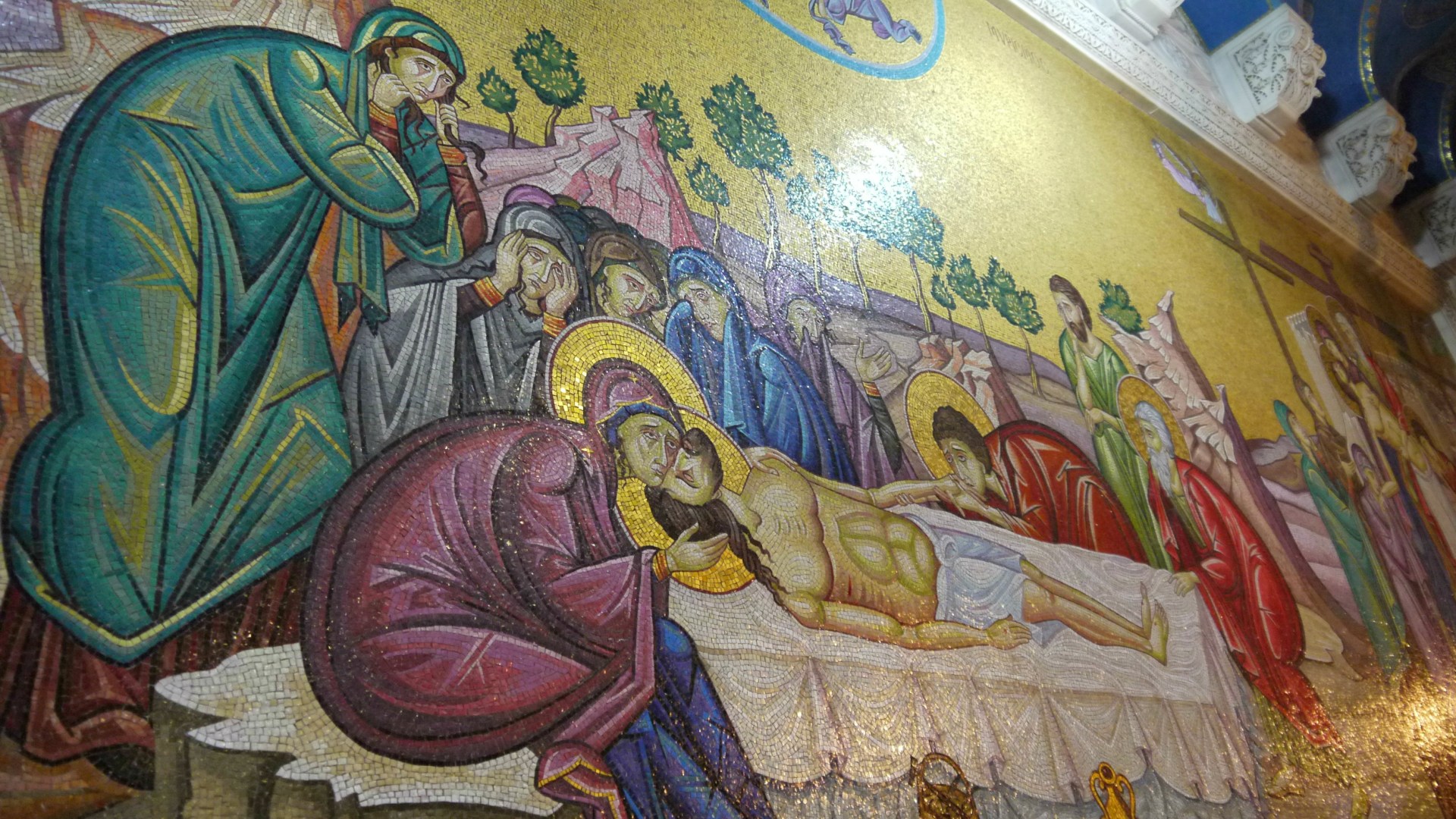Beneath layers of ancient marble, renovators at the Church of the Holy Sepulchre in Jerusalem say they have found what may be the limestone bench where the body of Jesus was laid after his crucifixion.
For the first time in half a millennium, church officials have allowed access to a tomb even more famous than that of “King Tut,” the Egyptian pharaoh Tutankhamun.
However, they can’t say for sure that it is the right tomb.
The official purpose of the historic project is to rebuild the Edicule, the shrine in the middle of the church rotunda which encloses the tomb. Built in the early 19th century over previous constructions, the shrine was in danger of collapse and barely held together by iron girders added decades later.
Beginning October 26 and working nonstop for 60 hours, a team from the National Technical University of Athens removed marble coverings and layers of fill and debris, before finally reaching the revered limestone level at the base of the tomb. They also discovered, surprisingly, that the limestone walls of the tomb were somewhat intact beneath the layer of marble.
“We can’t say 100 percent, but it appears to be visible proof that the location of the tomb has not shifted through time—something that scientists and historians have wondered for decades,” said Fredrik Hiebert, archaeologist-in-residence for National Geographic, which documented the discovery.
But why is this tomb revered, and not one of the other tombs archaeologists have found in the area, which was a quarry before it was converted to a burial place in the first century?
The tradition associated with the Church of the Holy Sepulchre goes back to the fourth century when Helena, the Christian mother of the emperor Constantine, came to the Holy Land seeking to identify sites connected to the ministry of Jesus. The burial site identified by residents at that time was covered by a pagan Roman temple.
The effort to display Roman mastery over the nascent Christian faith by covering up its holy spot had, in fact, marked it for future veneration.
“That temple tells you there is something going on with this location. It isn’t just any location at all,” said Darrell Bock, research professor of New Testament studies at Dallas Theological Seminary. “They’re making a social political statement by their architecture.”
However, when Protestants from Europe and the United States (Mark Twain among them) began flooding Palestine in the 19th century, they looked askance at the Church of the Holy Sepulchre in Jerusalem.
“Protestants came last to Jerusalem. And when they came, the Holy Sepulchre was occupied by other Christian denominations,” said Israeli archaeologist Gabriel Barkay. They also noticed that the New Testament says that Jesus was crucified outside the city gate (Heb. 13:12). This church was plainly inside the city walls.
So another site called the Garden Tomb—discovered in 1867 just outside the Damascus Gate—developed a following.
The Garden Tomb is operated by a nondenominational Christian charitable trust based in the United Kingdom. However, the British tour guides who lead groups past a hill that could be Golgotha and into the empty tomb only go so far as to say it could be the actual tomb of Jesus.
Barkay, the first to archaeologically study the Garden Tomb, discovered it could not have been the new tomb described in the Gospels due to its style and its relationship with other nearby tombs which were much older.
“The whole arrangement of the architecture reflects burial customs which go back to the First Temple period,” he explained in a 1990 interview with The Book & The Spade radio program. Historians have also noted that the city walls of Jerusalem were expanded after the death of Jesus.
A Protestant pilgrimage to Jerusalem typically includes a visit to both locations, with time for quiet reflection and a communion service in the Garden Tomb. The Church of the Holy Sepulchre is busy and noisy, and does not lend itself as well to quiet reflection.
Craig Evans, author of the new book Jesus and the Remains of His Day: Studies in Jesus and the Evidence of Material Culture, doesn’t expect the presentation will change much with this latest project. But the Houston Baptist University professor of Christian origins would like to see the church arranged differently.
“As a scholar and as a Protestant, I would like the tomb to be open and visible to the public, rather than covered with marble and an ornate shrine,” he said. “The church itself is a shrine. Covering the remains of the tomb obscures it.”
Evans said the Garden Tomb is clearly too old to be the tomb of Christ. But it does help give visitors a good idea of what an ancient tomb looked like.
New Testament scholars such as Bock and Evans are intrigued by the Holy Sepulchre renovations, but are keeping their expectations in check.
“The work of renovation should help archaeologists and historians gain a better sense of the tomb, which was damaged and greatly reduced by the fourth-century construction of the church,” Evans said. “This is a significant opportunity for scholars to examine portions of the tomb that have been hidden for half a millennium or longer.”
Bock does not think additional information will be uncovered that will lend any more evidence to whether the Edicule location actually is the site of Jesus’ resurrection.
“The most important fact is that the tomb did not contain Jesus permanently,” Bock said. “He was raised from the dead.”
Gordon Govier is editor of ARTIFAX, a quarterly journal focused on biblical archaeology. He also produces a weekly radio program called
The Book & The Spade
.








